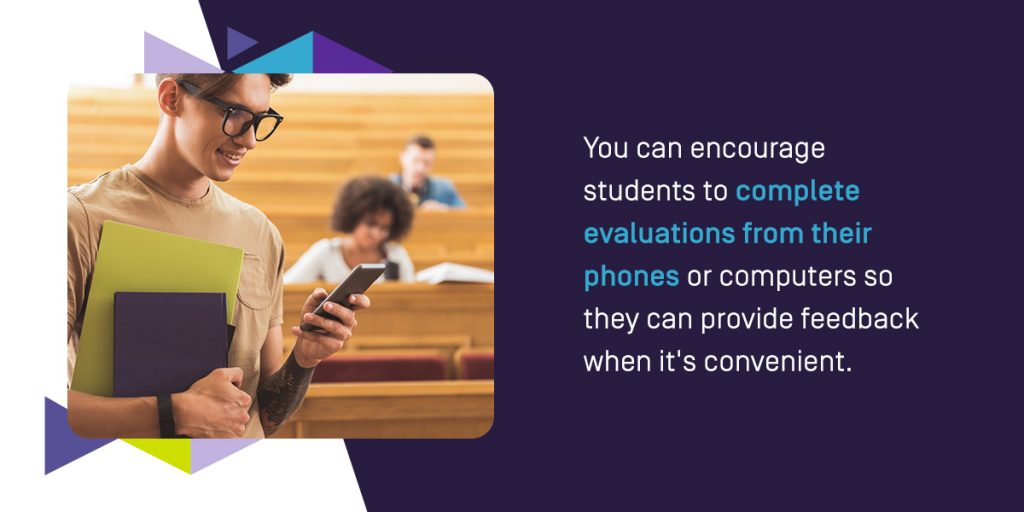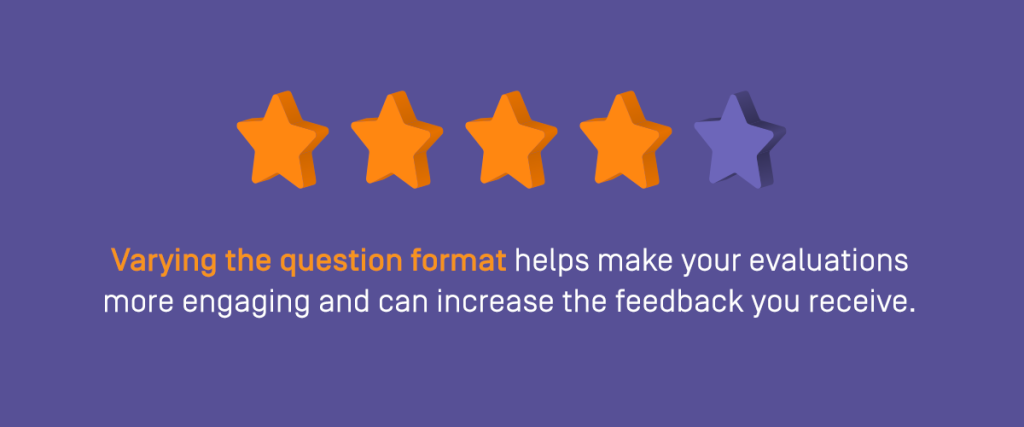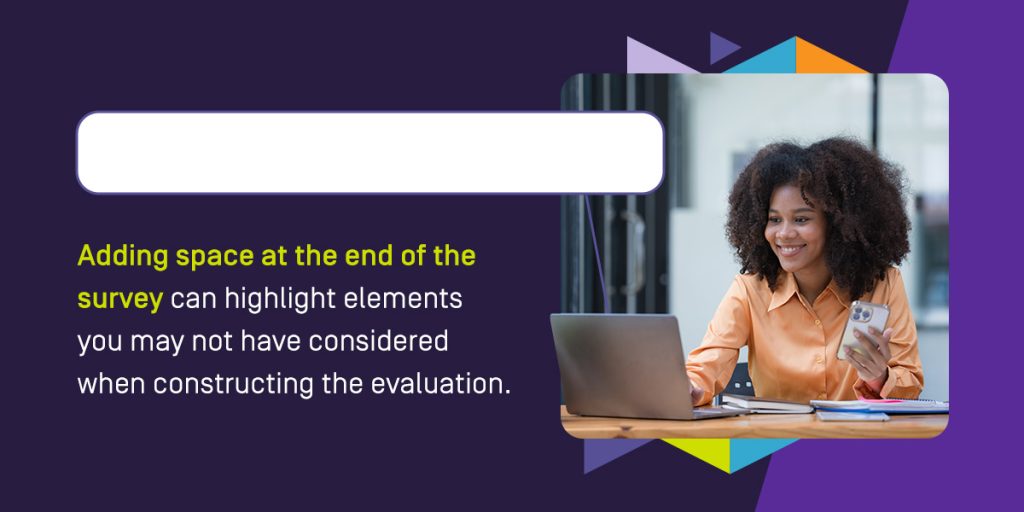




It’s never too early to prepare for end-of-course evaluations. The sooner you start, the more time you have to refine and improve your surveys and processes. These reminders will help you set up flawless evaluations.
Student course evaluations can provide valuable information about program success, campus pain points, and student experiences. The many benefits of course evaluations empower institutions to reach initiatives effectively while ensuring student success. Preparing for these student evaluations can help you create a smooth and meaningful way to collect essential data. Follow these best practices:
Copy last semester’s evaluation projects to save time on setup. Most standard settings (including communications, reporting setup, surveys, and project properties) can be turned into templates so you don’t need to start over each term. This can be especially helpful for longitudinal reporting — by using the same survey structure each semester, spotting trends over time is easy.
Our Course Evaluations & Surveys can seamlessly integrate with your LMS to help boost response rates and make it easy for you to pull key dates, course information, and user data into your evaluation project. Be sure to resync your data before importing courses for your new term so you’re working with the most recent information for your evaluations.
Double-check that communications and other date-driven events correspond to each course’s correct start and end dates. You don’t want students in a 16-week course to get their final evaluation midway through the semester, so if you have a variety of course lengths, set up dates at the course level. Project-level or fixed dates often work well if all courses follow the same timeline.
Look through your communications and dates to ensure everything aligns with the current semester. Make sure that all courses are listed and aligned with the right hierarchy levels and that enrollment numbers are accurate. Remember to remind administrators and instructors to double-check that their custom questions are set up and ready to go.
If you’ve been making many changes on campus, now could be the right time to expand your surveys. If you plan ahead, you have ample time to adjust your evaluations and try something new. Consider:
You must express the importance of evaluations to students and faculty before administering the assessments. Emphasize that feedback is essential to growth and improvement at your institution. If possible, show opportunities where feedback impacted your campus to show students and faculty that you respect their valuable input. Consider creating a visual to help everyone on campus understand that their voice matters.
Encourage instructors to speak directly with students about the importance of end-of-course evaluations. Assure confidentiality so each response can be as genuine as possible.
The more results you can gather, the more meaningful insights you can create. Meeting students where they’re at is an excellent way to gather more feedback. You can encourage students to complete evaluations from their phones or computers so they can provide feedback when it’s convenient. Additionally, you can require responses to unlock actions, such as looking at grades to prompt more responses.

Send reminders often to express the importance of the evaluation and to show that you respect and expect feedback. Make student course evaluations accessible in various ways. Send links in email reminders, post pathways on educational software, and offer paper responses for students who may complete assessments during class times.
Whether creating new course evaluations or refreshing your current ones, knowing how to create effective surveys can be challenging. To help you get a head start on course evaluations, consider these tips:
Adding intentional questions makes the responses much more valuable. Have a goal in mind to base questions on. For example, if you’re trying to determine if certain course materials were effective, you may ask students if they found them helpful. Intentional questions also help keep the evaluation focused so each question has a purpose that helps you meet a goal.
Intentional questions also elicit intentional responses. The more thought you put into your questions, the more thought you’ll get in the answers.
While you may use a few general questions that could apply to most courses, the more specific your questions are, the better. Vague, general questions are more difficult to answer, so the responses will be less helpful for implementing change. Be clear and specific when writing evaluation questions to get more straightforward answers and higher engagement.
For example, rather than asking if students generally liked or disliked a course, ask if they think a specific textbook should be used again and why. Questions like this provide more useful insights to inspire future course improvements.
Use a combination of open-ended, short-response, and rating-scale questions to elicit the most comprehensive feedback possible. Varying the question format helps make your evaluations more engaging and can increase the feedback you receive.

For example, asking only rating-scale questions may not give you in-depth insights — alternatively, participants may feel less inclined to complete the evaluation if they have to freewrite all their answers. Using different question formats in your evaluation also diversifies the data you collect.
Keep your evaluations short to increase the likelihood that more students complete them. Students are busy individuals, especially at the end of the semester. Between studying for finals and completing evaluations for each of their courses, students value the convenience of brief evaluations. The longer the survey is, the more likely you’ll get a lot of random answers just so students can “finish” it.
Encourage faculty to give students time to complete these evaluations in class to increase the response rates.
Student course evaluations should directly reflect a course’s learning objectives and outcomes. This process will ensure the feedback is relevant to the goals of the course and helps instructors identify where they may need to modify teaching strategies or address a lack in a program. For example, rather than asking whether a student enjoyed a course, ask students to discuss the most memorable project or assignment or to detail which materials were most beneficial and why.
This could also involve creating opportunities for students to reflect on complex ideas or course topics. For example, an evaluation could prompt students to explain what a critical term from the course means. If most students lack an understanding of this core concept, instructors can rework their course materials to address this concern.
The more specific information you can gather, the more data you can work with. Similar to utilizing various question formats, it’s important to create opportunities to discuss topics you may have forgotten to include in the evaluation. Adding space at the end of the survey to encourage students to share anything else on their minds can bring new ideas to light. Asking respondents to share their top takeaways or grievances can highlight elements you may not have considered when constructing the evaluation.

Furthermore, this can highlight the importance of input. For example, you may have a question about whether a class textbook was useful in your evaluation. Although a student may express their opinion about the topic under this question, they may take the opportunity at the end of the survey to offer additional insight or provide recommendations, highlighting the importance of that topic for that student.
Using student and faculty feedback, you can regularly update assessments to reflect current needs and experiences. People may feel less inclined to answer surveys if they believe the information is outdated or doesn’t apply to their experience.
Ensure every question is relevant and aligns with student learning outcomes, instructional practices, and institutional goals. Keeping updated versions of these evaluations can make it easier to administer effective assessments in the following semesters. Revisiting and improving the evaluation process can boost its effectiveness and ensure it continues to provide meaningful insights.
Save yourself time at the end of the term by planning ahead with Watermark. Digital course evaluation platforms like Watermark simplify course evaluation preparation. Our Course Evaluations & Surveys solution makes collecting student feedback easy. Enjoy features that give you control over when and where evaluations are sent out, leverage responses into actionable insights to drive improvement for student success, and allow you to repeat evaluations from term to term easily.
Request a demo to see how Watermark Course Evaluations & Surveys can benefit your institution.





























































































































































































































































































































































































